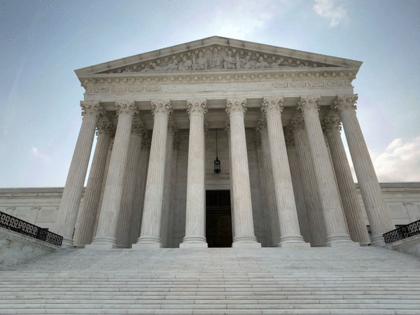Editorial: With or without Chevron, clearer laws are essential
Published in Op Eds
Among the many rulings the Supreme Court handed down this term, a decision on so-called Chevron deference could prove especially consequential. The question at issue was whether the courts or government agencies should determine the meaning of ambiguous laws. The new ruling unsettles a 40-year-old understanding by shifting some of the power over these choices away from the executive branch. Many regulatory actions may now face a torrent of litigation.
Chevron deference matters more than it should because Congress insists on passing so many ambiguous statutes. Lawmakers do this partly by accident, failing to think through how new regulations will work in practice, and partly by design, settling on muddled directives as a way to build coalitions and satisfy rival constituencies. In either case, their failure leaves the other branches of government to work out what the laws in question actually mean.
Under the now-discarded Chevron doctrine, courts usually deferred to the wisdom of regulatory agencies — and, on the face of it, with good reason. Officials at the Environmental Protection Agency, for example, know a lot more about how to regulate pollution than do lawyers and judges. The problem is that the relevant statutes give the agencies such wide leeway that they can sometimes act as de facto lawmakers. Under Chevron deference, the agencies weren’t required to show that their interpretation of the law was correct, or the best or most plausible interpretation — only that it was “reasonable.” Over time, agencies have become increasingly adept at widening this discretion and expanding what conservatives often deride as the administrative state.
So it’s no surprise that the court’s conservative majority has overthrown the Chevron understanding — or that the liberal minority objected in such strident terms. In a dissent, Justice Elena Kagan wrote, “A longstanding precedent at the crux of administrative governance thus falls victim to a bald assertion of judicial authority. The majority disdains restraint, and grasps for power.”
It’s worth remembering that the politics of this decision can cut both ways. When Chevron deference was first established in 1984, conservatives applauded and liberals were dismayed. Under President Ronald Reagan, the EPA aimed to lighten regulation of power plants. Liberals wanted the agency’s discretion to do this reined in and objected when the Supreme Court said, in effect, the regulators know best. As you might expect, opinions on where power in these matters should reside often have more to do with political preferences and who happens to control the respective branches of government than with constitutional propriety.
Writing for the majority, Chief Justice John Roberts said, “By its sheer breadth, Chevron fosters unwarranted instability in the law, leaving those attempting to plan around agency action in an eternal fog of uncertainty.” That’s true. Kagan’s dissent is equally correct to say that overturning Chevron will itself be enormously disruptive. The fact is, there’s no good remedy for Congress’ tendency to write ambiguous laws. If lawmakers cannot bring themselves to enact clearer statutes, agencies and the courts will frequently be at odds over what the law demands. Whichever branch gets to choose, the eternal fog of uncertainty won’t lift.
The fault, and the only good solution, lies with Congress.
____
The Editorial Board publishes the views of the editors across a range of national and global affairs.
©2024 Bloomberg L.P. Visit bloomberg.com/opinion. Distributed by Tribune Content Agency, LLC.







Comments